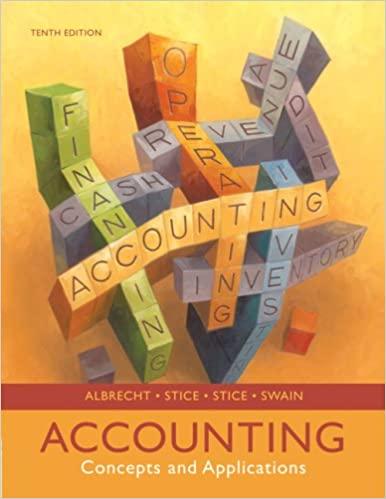Creating a Forecasted Balance Sheet and Income Statement This spreadsheet assignment is a continuation of the spreadsheet
Question:
Creating a Forecasted Balance Sheet and Income Statement This spreadsheet assignment is a continuation of the spreadsheet assignments given in earlier chapters. If you completed those spreadsheets, you have a head start on this one. If needed, review the spreadsheet assignment for Chapter 4 to refresh your memory on how to construct forecasted financial statements.
1. Handyman wishes to prepare a forecasted balance sheet and income statement for 2010. Use the original financial statement numbers for 2009 [given in part (1) of the Cumulative Spreadsheet Project assignment in Chapter 2] as the basis for the forecast, along with the following additional information:
a. Sales in 2010 are expected to increase by 40% over 2009 sales of $700.
b. In 2010, Handyman expects to acquire new property, plant, and equipment costing $80.
c. The $160 in other operating expenses reported in 2009 includes $5 of depreciation expense.
d. No new long-term debt will be acquired in 2010.
e. No cash dividends will be paid in 2010.
f. New short-term loans payable will be acquired in an amount sufficient to make Handyman’s current ratio in 2010 exactly equal to 2.0.
Note: These statements were constructed as part of the spreadsheet assignment in Chapter 4; you can use that spreadsheet as a starting point if you have completed that assignment.
For this exercise, the current assets are expected to behave as follows:
i. Cash and inventory will increase at the same rate as sales.
ii. The forecasted amount of accounts receivable in 2010 is determined using the forecasted value for the average collection period. For simplicity, do the computations using the end-of-period accounts receivable balance instead of the average balance. The average collection period for 2010 is expected to be 14.08 days.
Clearly state any additional assumptions that you make.
2. Repeat (1), with the following change in assumptions:
a. Average collection period is expected to be 9.06 days.
b. Average collection period is expected to be 20.00 days.
3. Comment on the differences in the forecasted values of accounts receivable in 2010 under each of the following assumptions about the average collection period: 14.08 days, 9.06 days, and 20.00 days. Under which assumption will Handyman’s forecasted cash flow from operating activities be higher? Explain.
Step by Step Answer:

Accounting Concepts And Applications
ISBN: 9780324376159
10th Edition
Authors: W. Steve Albrecht, James D. Stice, Earl K. Stice, Monte R. Swain





